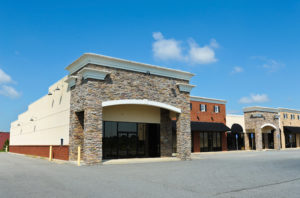The Commercial Real Estate Lease

The terms of a commercial real estate lease can have a significant affect on the cash flow of the landlord and the tenant. Each party should therefore carefully review the lease and fully understand their obligations under the lease.
Gross Lease
A commercial real estate lease is typically categorized as either gross or net. A gross commercial real estate lease obligates the tenant to pay only monthly rent, from which the landlord pays the landlord’s expenses, such as taxes, insurance, and maintenance related to the building. A commercial should describe in detail the services that the landlord is obligated to provide to the tenant in exchange for rent, such as office cleaning and the cost of certain utility services. A gross commercial real estate lease might allow the landlord to charge the tenant for excessive use of certain utilities. If so, the lease should state the maximum amount the tenant may use without extra charge, such as kilowatts of electricity or gallons of water. Providing such specificity allows both parties to better manage cash flow.
Net Lease
A net commercial real estate lease includes monthly rent plus an additional monthly payment for certain costs incurred by the landlord, which are passed through to the tenant. These additional costs typically include taxes, insurance, and common area maintenance. The lease should provide a detailed description of each such additional cost that the tenant is obligated to pay. Most commercial real estate lease s require the tenant to pay an estimated amount of the additional costs, which is then reconciled when the actual costs are known, usually at the end of the year.
With a single net lease, the landlord passes on to the tenant certain tax liabilities of the landlord in relation to the building. These generally include annual property taxes and certain other tax assessments related to the leased property. With a double net commercial real estate lease, the tenant is also liable for the payment of certain insurance premiums owed by the landlord in relation to the leased property. Such insurance typically includes commercial general liability (CGL) coverage and coverage for damage to the building owned by the landlord.
The lease should specifically list the types of insurance coverage for which the tenant must reimburse the landlord, and the tenant should obtain from the landlord the historical costs paid by the landlord for such coverage. The lease will also likely obligate the tenant to obtain its own GCL policy and other categories of coverage. Plus, the tenant might want to include coverage not required under the lease. All of these insurance costs can result in a significant financial burden for the tenant. As such, the tenant should, prior to signing the lease, consult a knowledgeable insurance broker or agent about the policies and their costs.
With a triple net lease, the tenant is liable for taxes, insurance, and common area maintenance (CAM). CAM includes the costs incurred by the landlord in operating the premises. These costs typically include electricity, landscaping, garbage collection, snow removal, and routine parking lot maintenance. Again, the lease should list these items.
Proportionate Share
If the building has only one tenant, then that tenant will alone be liable for the costs of a net lease. However, if the building has multiple tenants, then the net costs are typically shared proportionally among all tenants. As such, each tenant will usually be liable for their share of the net costs according to their respective “proportionate share”, which is a percentage calculated by dividing the leasable square feet of the premises leased to the tenant by the total leasable square feet of the entire building. If, for example, a tenant’s proportionate share is 25%, then that tenant will be liable for 25% of the net costs. The lease should identify the tenant’s proportionate share and include a description of how it is calculated, including the square feet used in the calculation. This is important, as a tenant’s proportionate share can change during the lease if the area leased by the tenant, or the total leasable square feet of the building, changes.
Maintenance and Repair
Most commercial real estate leases require the tenant to perform, and pay for, all maintenance and repairs required on the leased premises. Prospective tenants should carefully assess the current condition of the premises and estimate the cost of future repairs and maintenance. The landlord should disclose to the tenant the types of repairs and maintenance that are routinely required on the premises. Long term leases of ten or years or more might require the tenant to also perform structural replacements to parts of the leased premises. This can include the cost to replace the roof, subfloors, and portions of the parking lot. Replacement costs are usually expensive and can make a big dent in retained earnings or cash flow. As such, the lease should disclose which party is liable for structural replacements and clearly describe the portions of the premises that the party is obligated to replace.
This article is for general informational purposes only, and it is not intended as legal advice. Sewell Law provides professional legal services in the areas of real estate and business law, including litigation. Please contact Michael Sewell, MBA, JD at (314) 942-3232 or at michael@sewelllaw.net to discuss your legal matters.
The choice of a lawyer is an important decision and should not be based solely upon advertisements.
© 2018 Sewell Law, LC


